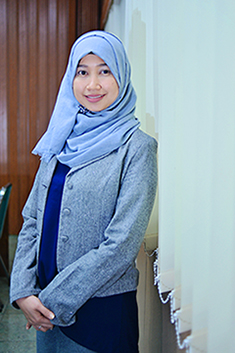Perbandingan Metode Sintesis Senyawa 1-benzil-3-(4-etil-benzoil)urea dan 1-benzil-3-(4-klorometil-benzoil)urea sebagai Calon Obat Antikanker
Downloads
Aliyu, A. O. C. & Abubakar, I. (2011). Synthesis of Some Capsaicin Analogues Using Fatty and Benzoic Acid- Chlorides. International Journal of Advanced Research in Chemical Science; 5; 1-3.
Clayden, J., Greeves, N. & Warren, S. (2001). Organic Chemistry 1st edition. New York: Oxford University Press Inc.
Dean, B. D., Matzner, M. & Tibbitt, J. M. (1989). 18 – Polyarylates. Comprehensive Polymer Science and Supplements; 5; 317-329.
El-Sawy, E. R., Mandour, A. H., Mahmoud, K., Islam, I. E. & Abo-Salem, H. M. (2012). Synthesis Antimicrobial and Anticancer Activities of Some New N-Ethyl, N-Benzyl and N-Benzoyl-3-Indolyl Heterocycles. Acta Pharmaceutica; 62; 157–179.
Kesuma, D., Purwanto, B. T. & Rudyanto, M. (2019). Synthesis and Anticancer Evaluation of N-benzoyl-N' Phenyltiourea Derivatives Againts Human Breast Cancer Cells (T47D). Journal of Chinese Pharmaceutical Sciences; 29; 123-129
Kesuma, D., Purwanto, B. T. & Rudyanto, M. (2017). Synthesis of N-(phenylcarbamothioyl)-benzamide Derivatives and Their Cytotoxic Activity Against MCF-7 Cells. Journal of Chinese Pharmaceutical Sciences; 27; 696-702.
Lokwani, D., Bhandari, S., Pujari, R., Shastri, P., Shelke, G. & Pawar, V. (2011). Use of Quantitative Structure-Activity Relationship (QSAR) and ADMET Prediction Studies as Screening Methods for Design of Benzyl Urea Derivates for Anti-Cancer Activity. Journal of Enzyme Inhibiton and Medicinal Chemistry; 26; 319-331.
Lu, C. S., Tang, K., Li, Y., Jin, B., Yin, D. L., Ma, C., Chen, X. G., Huang, H. H. (2013). Synthesis and In Vitro Antitumor Activities of Novel Benzyl Urea Analogues of Sorafenib.Yao Xue Xue Bao; 48; 709-717.
Pietrangelo, A. & Holland, K. (2018). The Top 10 Deadliest Diseases. https://www.healthline.com/health/top-10-deadliest-diseases#cad. Accessed: 1 October 2018.
Saban, N. & Bujak, M. (2009). Hydroxyurea and Hydroxamic Acid Derivatives as Antitumor Drugs. Cancer Chemotherapy and Pharmacology; 64; 213–221
Sary, I. P., Siswandono, Budiati, T. (2015). N-Phenylbenzamide Synthesis by Nucleophilic Substitution With 1,3-Diphenylthiourea. International Journal of Pharmacy and Pharmaceutical Sciences; 7; 481-482
Segal, J. B., Strouse, J. J., Beach, M. C., Haywood, C., Witkop, C., Park H. S., Wilson R. F., Bass E. B. & Lanzkron S. (2008). Hydroxyurea for the Treatment of Sickle Cell Disease. Evidence Report/Technology Assessment; 165; 1-95.
Shalas, A. S., Siswandono & Rudyanto, M. (2016). Synthesis and Structure-Activity Relationship of 1-Allyl-3-(2-Chlorobenzoyl) Thiourea as Analgesic. International Journal of Pharmacy and Pharmaceutical Sciences; 8; 97-298.
Shalas, A. S., Siswandono & Rudyanto, M. (2018). Synthesis and Pain Inhibition Activity of the Analogs of 1-Allyl-3-Benzoylthiourea for New Analgesic Lead Compound Discovery. Journal of Young Pharmacists; 10; 12-15
Suhud, F., Siswandono & Budiati T. (2015). Synthesis and Activity Evaluation of a Novel Lead Compound 1-Benzyl-3-Benzoylurea as Antiproliferative Agent. World Journal of Pharmaceutical Sciences; 3; 192-195.
Suhud, F. (2018). Penemuan Obat Baru Turunan Urea Sebagai Antikanker: Langkah-langkah dan Aplikasi di Bidang Penelitian. Graha Ilmu: Yogyakarta.
Sweetman, S. (2009). Martindale the Complete Drug Reference (36th ed.). London: Phamaceutical Press.
White, T. D., Berglund, K. D., Groh, J. M., Johnson, M. D., Miller, R. D. & Yates, M. H. (2012). Development of a Continuous Schotten–Baumann Route to an Acyl Sulfonamide. Organic Process Research & Development; 16; 939–957.
1. The copyright of this journal belongs to the Editorial Board and Journal Manager with the author's knowledge, while the moral right of the publication belong to the author.
2. The formal legal aspect of journal publication accessibility refers to the Creative Commons Attribution-Non-Commercial-Share Alike (CC BY-NC-SA), which implies that the publication can be used for non-commercial purposes in its original form.
3. Every publication (print/electronic) is open access for educational, research, and library purposes. In addition to the objectives mentioned above, the editorial board is not responsible for copyright infringement


.jpg)















